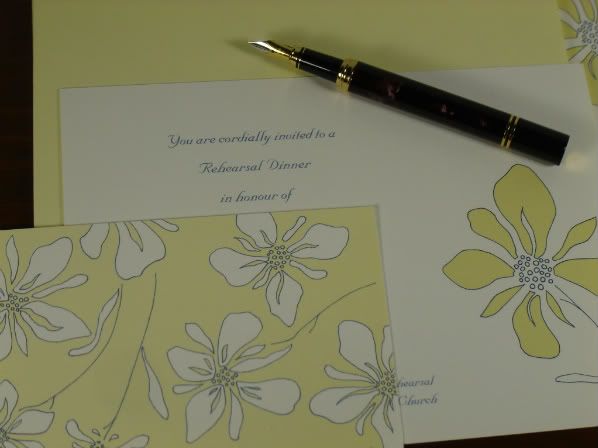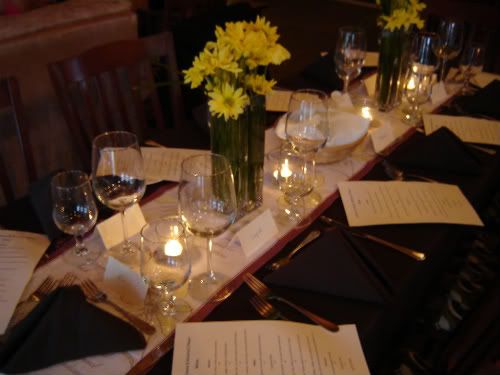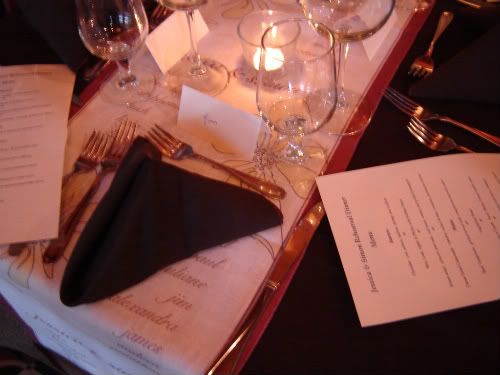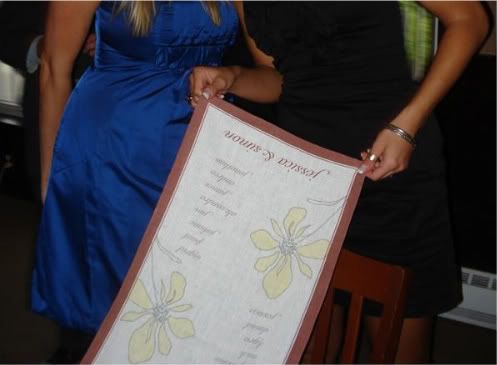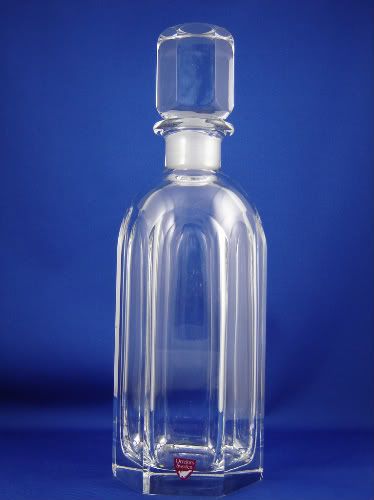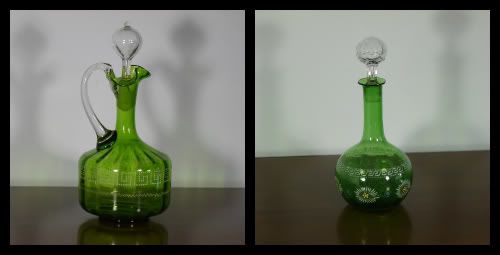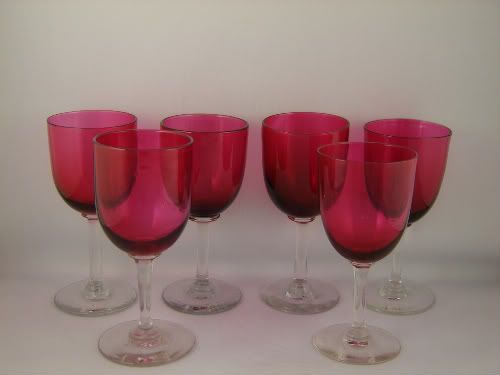 |
| Across St. John's Harbour--a Fjord, is the Easternmost Point of North America |
The members’ lounge is a large square masculine style room with dark furniture and paneling. There is a bar in one corner, and a grouping of wing chairs in another corner bracketed by large bay windows. Another seating area is in front of a rustic fireplace.
After the rehearsal at the church, all of us arrived at the club, the bridal couple, their ten attendants, and the bridal couple’s parents. Because it was a little cool outside, the fire was already burning in the fireplace making the room warm and inviting. Two tables were set with dark brown table cloths, the memory runners, votive candles, and flowers in long bud vases. We had a chance to bond as we lingered near the fireplace over drinks and appetizers before sitting down to dinner. My son made a gracious speech thanking everyone for their help. He and his fiancée then distributed their gifts to everyone in the bridal party. Excitement reigned and stayed with us in anticipation of the following day’s festivities.
The two memory runners I mentioned earlier were a surprise for the bride and proved a great success. The bride and her two sisters were thrilled; I received huge hugs from all. A twitter friend in San Francisco, Linda J. Marshall (@LindaJMarshall), designed and custom made them, replicating the design on the rehearsal dinner invitations. To make them especially meaningful, she added the first names of each member of the bridal party to the runners. She suggested the couple would use them each year on their anniversary. Think of the stories they will tell their children in years to come.
The long bud vases with yellow daisy-like flowers were not exactly what I had ordered from the florist, but we were able to group them in an attractive way on the tables. Later in the evening, I was glad the flowers worked out as they did. The bud vases were attractive, quite heavy and square in circumference. There were enough of them to give each of the ladies attending a bud vase filled with yellow daisies to take home.
In some future posts: more wedding photos.
The long bud vases with yellow daisy-like flowers were not exactly what I had ordered from the florist, but we were able to group them in an attractive way on the tables. Later in the evening, I was glad the flowers worked out as they did. The bud vases were attractive, quite heavy and square in circumference. There were enough of them to give each of the ladies attending a bud vase filled with yellow daisies to take home.
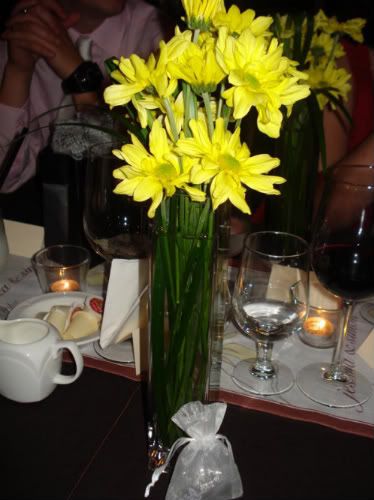 |
| The Maid-of-Honour's Keepsakes |

